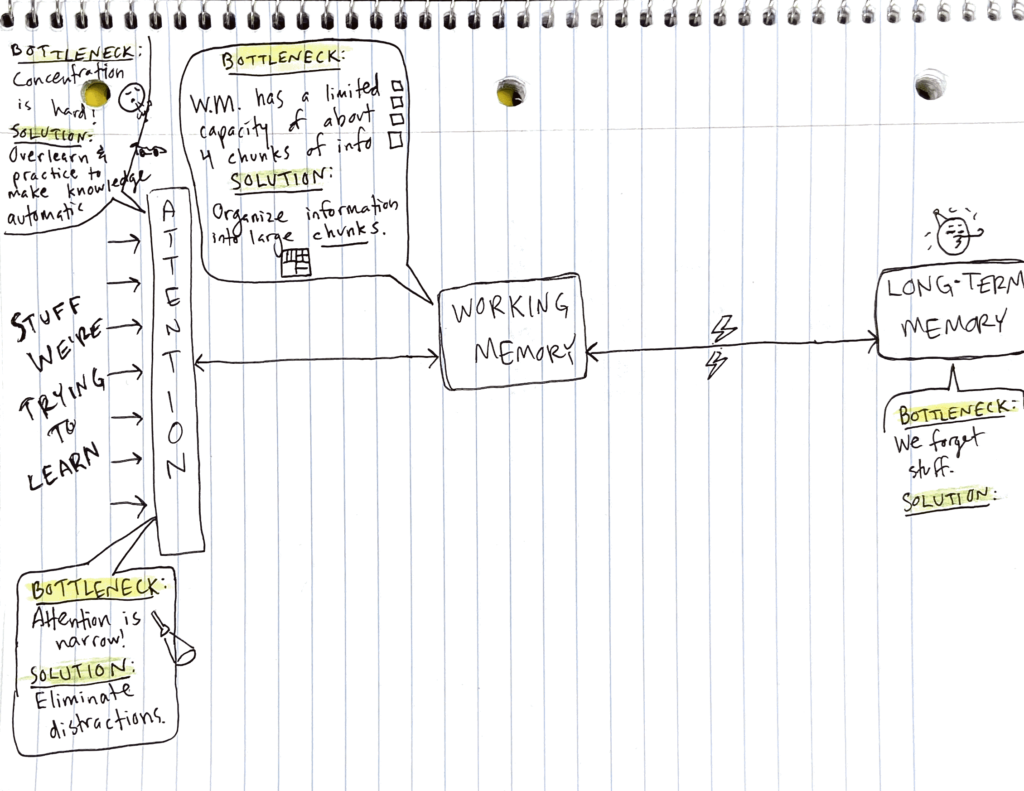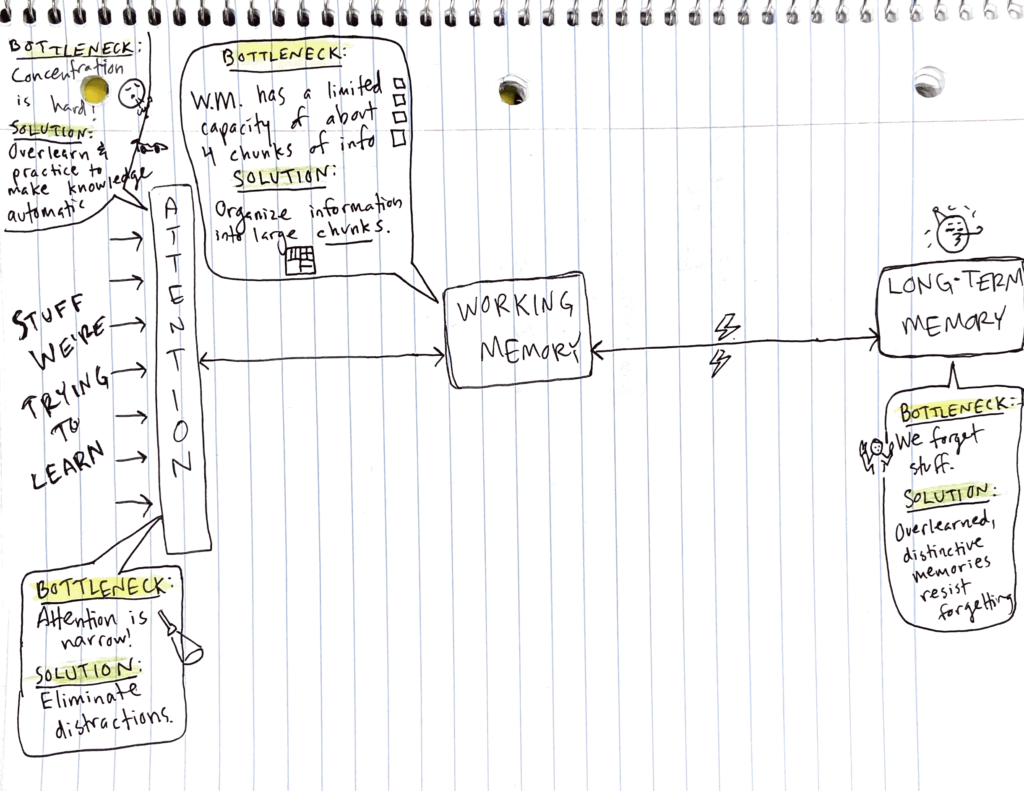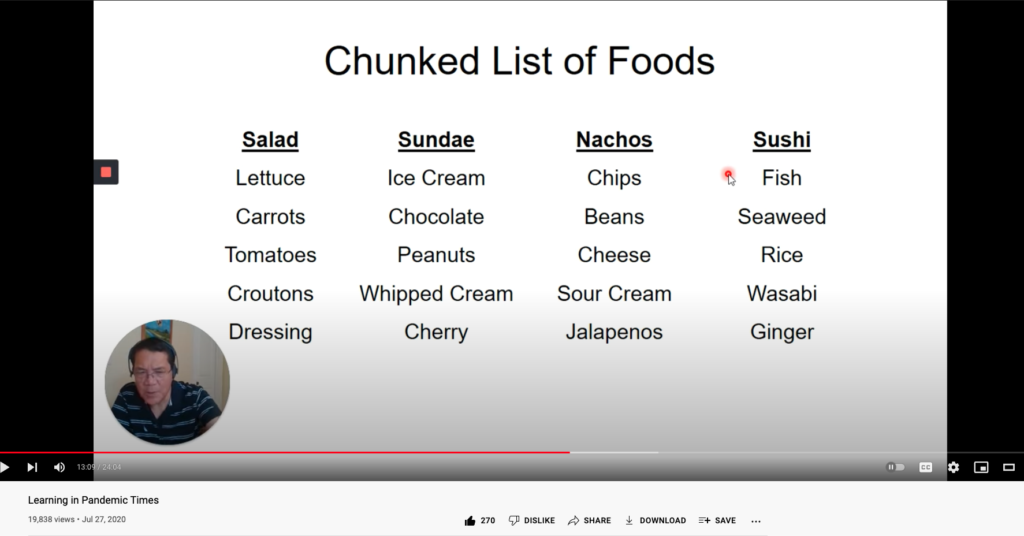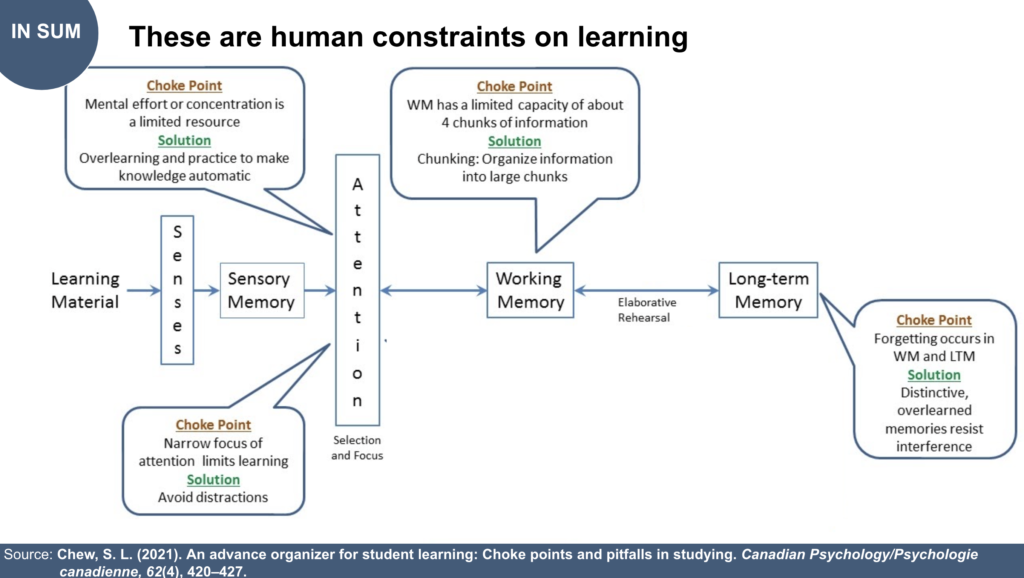Hey there, colleague! What follows is a mini-lesson that teaches secondary students how to learn more effectively. It's part of a series, which you can access right here. When we teach students about learning, we empower them to work smarter and get better results for their effort. This is massively important for cultivating the five key beliefs beneath student motivation.
Without further ado — here's today's post! -DSJR

All right ya'll — you know the drill! We're starting lessons this week with insights on learning. Isn't it interesting? Anyone putting anything they've learned through these into practice this week so far? If you haven't… c'mon, whaddya waiting for? 🙂
Thirty seconds — what are the four bottlenecks to learning that ALL humans have to deal with?
- Attention is narrow
- Concentration is hard
- Working Memory is limited
- We forget stuff
Now — anyone notice how recalling those four items has become easier this week? What're we doing there?
Yeahhhhhhh, that's right. We're overlearning them; our minds are integrating these pieces of knowledge into our long-term memory, making it easier for us to remember them and think with them.
But what if we forget them? That brings us to today's bottleneck: We forget stuff.

Also, I'm going to add the shrugging guy emoji for this one. Because this is just a thing that we do! Yesterday we looked at how quickly working memory forgets things — remember the list of letters? — and we all know that long-term memory can forget things to.
- You're walking down the hallway and see that classmate from seventh grade, but you can't remember their name.
- Your mom's birthday comes and goes and you don't say anything. (Never do this!!!)
- You're looking at a test in math class, and you've got that classic feeling of “Urgh!! I know this one!” but you can't actually remember how to do the problem.
Yep — we forget. All of us do.
So the solution here is going to look familiar: overlearned, distinctive memories resist forgetting.

That overlearning part should look familiar — it's the solution to concentration being hard, too. But the distinctive part is new. Here's all it means.
In his video, Dr. Chew explains this with a list of food types.

He says that these lists are distinct; they are non-confusable. You're not going to mix up sundaes and sushi.
But what if it was a list of different kinds of ice cream desserts — say, a sundae and a banana split and one of those tasty malts from KC's Cones?
Now it's less distinct.
That's the solution. Doing it is a little harder — we'll get into that more in the lesson to come.
That's the last of our bottlenecks — let's summarize

Can you tell me from memory, students, what the four bottlenecks on learning are?
- Attention is narrow
- Concentration is hard
- Working memory is limited
- We forget stuff
Okay — challenge time — how many of those can you remember the solutions for?
- Attention is narrow — so limit distractions
- Concentration is hard — so overlearn and practice to make knowledge automatic
- Working memory is limited — so organize information into chunks
- We forget stuff — so overlearn things and think hard about their distinctive meanings
Nice!
All right — on to today's main event.
Note from Dave: This article is part of a series of mini-lessons designed to improve student motivation by cultivating the Effort and Efficacy beliefs. More on the series here; more on the idea of the five key beliefs here.
Levi Evans says
Thanks so much for this series. I am using it with long term ELL students that are having some doubts about their ability to be successful in school. I really hope having a better understanding of their metacognition helps them be better learners and feel like they can succeed. Keep up the great work!